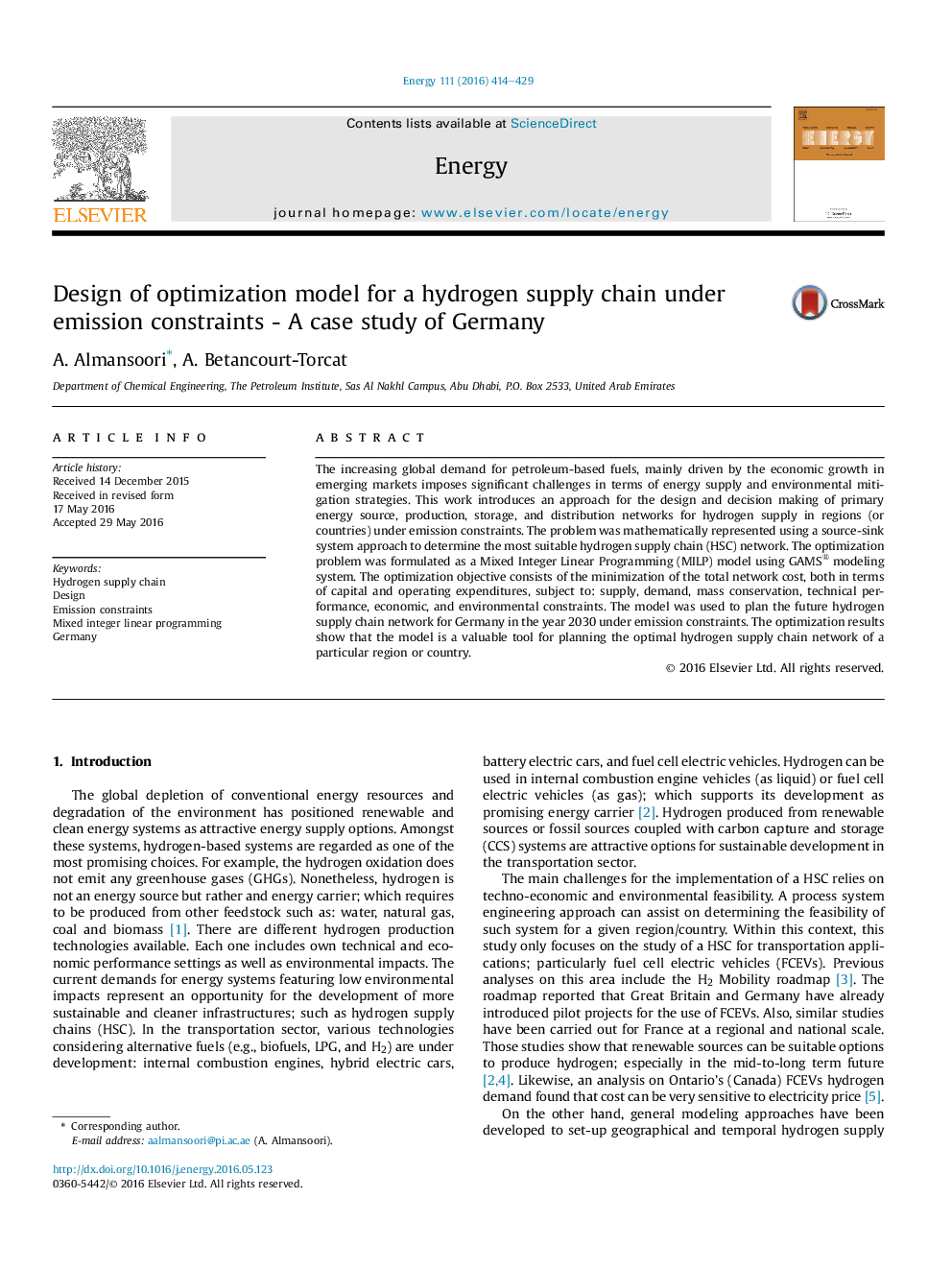| Article ID | Journal | Published Year | Pages | File Type |
|---|---|---|---|---|
| 8073268 | Energy | 2016 | 16 Pages |
Abstract
The increasing global demand for petroleum-based fuels, mainly driven by the economic growth in emerging markets imposes significant challenges in terms of energy supply and environmental mitigation strategies. This work introduces an approach for the design and decision making of primary energy source, production, storage, and distribution networks for hydrogen supply in regions (or countries) under emission constraints. The problem was mathematically represented using a source-sink system approach to determine the most suitable hydrogen supply chain (HSC) network. The optimization problem was formulated as a Mixed Integer Linear Programming (MILP) model using GAMS® modeling system. The optimization objective consists of the minimization of the total network cost, both in terms of capital and operating expenditures, subject to: supply, demand, mass conservation, technical performance, economic, and environmental constraints. The model was used to plan the future hydrogen supply chain network for Germany in the year 2030 under emission constraints. The optimization results show that the model is a valuable tool for planning the optimal hydrogen supply chain network of a particular region or country.
Related Topics
Physical Sciences and Engineering
Energy
Energy (General)
Authors
A. Almansoori, A. Betancourt-Torcat,
